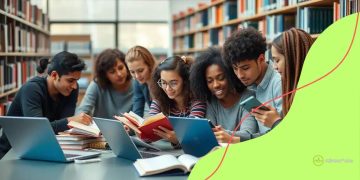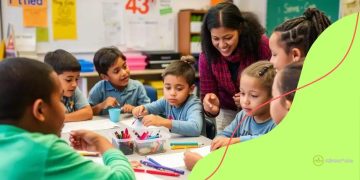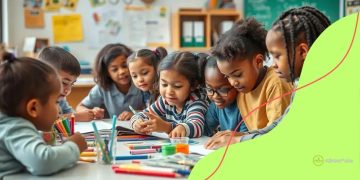Learning disability support: strategies for success
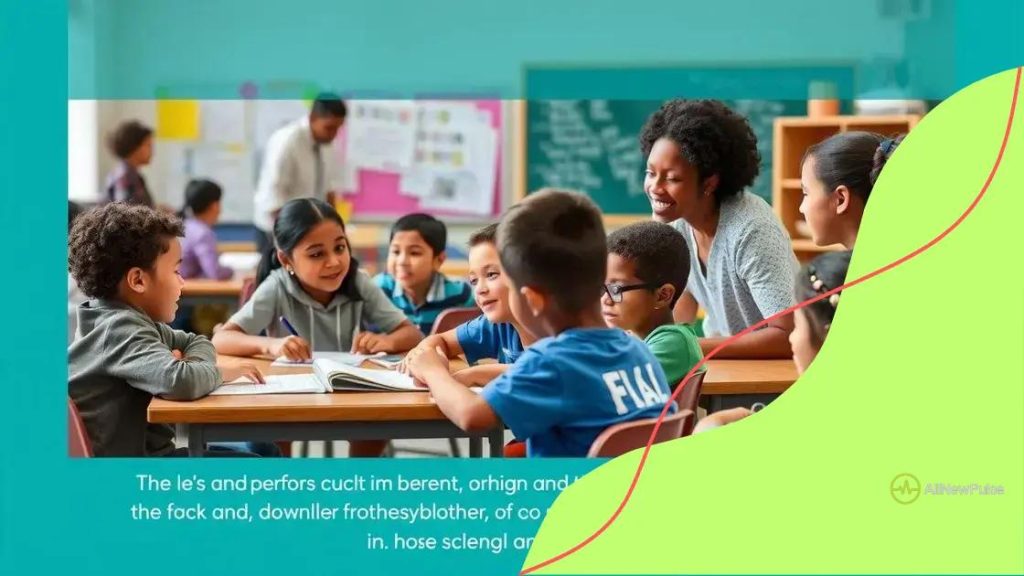
Learning disability support involves tailored strategies, resources, and collaboration between parents and educators to help students overcome challenges and thrive academically and emotionally.
Learning disability support plays a vital role in helping individuals thrive academically and socially. Have you ever wondered how tailored strategies can create a significant difference in their lives? In this article, we’ll delve into the essential approaches that can truly empower those affected.
Understanding learning disabilities
To truly support individuals with learning disabilities, it is essential to first understand what these disabilities are. Learning disabilities affect how a person processes information, which can make academic tasks challenging. By recognizing the different types of learning disabilities, we can better tailor our support and interventions.
Types of Learning Disabilities
Learning disabilities can manifest in various ways. Below are some common types:
- Dyslexia: Difficulty in reading and interpreting words.
- Dyscalculia: Challenges with numbers and mathematical concepts.
- Dysgraphia: Issues with writing, including handwriting and spelling.
- Auditory Processing Disorder: Difficulty in understanding language when heard.
Each type affects individuals differently. It’s crucial to address these unique challenges to provide proper help. For example, a student with dyslexia may need specialized reading strategies, while someone with dyscalculia could benefit from visual aids and manipulatives to grasp math concepts.
Impact on Learning
The impact of learning disabilities extends beyond academics. They can influence a student’s self-esteem and social interactions. Understanding these impacts helps educators and parents to provide a nurturing environment. Children with these disabilities often face frustration and anxiety when performing tasks that come easily to their peers. By fostering a supportive atmosphere, we encourage them to persevere.
It’s also vital to promote self-advocacy skills in individuals with learning disabilities. When they learn to understand their strengths and challenges, they can articulate their needs better. This understanding empowers them to seek help and utilize available resources.
Importance of early intervention
Early intervention is crucial for children with learning disabilities. Addressing these challenges when they first appear can make a significant impact on a child’s academic journey and overall development. The earlier a child receives support, the more successful they can be in overcoming hurdles and achieving their goals.
Benefits of Early Intervention
Providing help at an early age offers numerous advantages. It can:
- Improve self-esteem and confidence in learning.
- Reduce frustration associated with academic tasks.
- Enhance social skills and relationships.
- Lead to better academic outcomes in the long run.
When children get the support they need, they are more likely to enjoy learning. A positive learning experience can foster a love for education that lasts a lifetime. For example, children who receive tailored strategies for dyslexia in their early years can develop reading skills at a faster rate, boosting their confidence.
Importance of Family Involvement
Family engagement also plays a key role during early intervention. Parents can be advocates for their children, helping to identify needs and communicate with educators. When families are involved, children feel more supported at home and school. Parents can learn ways to assist their children with homework or develop skills in a fun and engaging manner.
Research shows that when parents are informed and participate in interventions, it boosts children’s progress. Connecting with support groups and professionals gives families the tools they need to contribute to their child’s learning journey effectively.
Effective support strategies for students
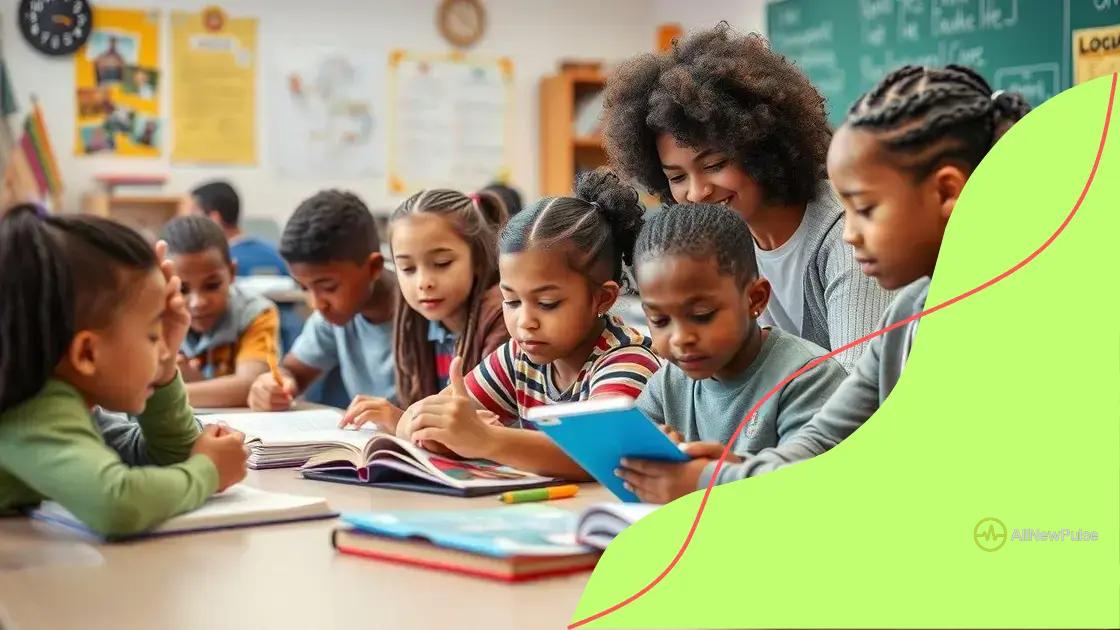
Effective support strategies for students with learning disabilities can play a crucial role in their academic success. These strategies are designed to meet individual needs and help students overcome barriers to learning. By implementing various approaches, educators and parents can create an environment conducive to growth.
Differentiated Instruction
Differentiated instruction allows educators to tailor lessons to each student’s strengths and challenges. This approach can include:
- Using multiple teaching methods to address different learning styles.
- Providing various types of assignments based on interest and ability.
- Offering choices in the way students demonstrate understanding.
When lessons are customized, students feel more engaged and are likely to grasp concepts better. For instance, using visual aids for a student with dyslexia can significantly enhance reading comprehension.
Utilizing Technology
Technology also offers valuable tools for supporting students. Adaptive software and applications can assist in their learning process. Some effective tools include:
- Text-to-speech programs that help with reading and comprehension.
- Organization apps for managing assignments and projects.
- Interactive games that reinforce learning in a fun way.
These technologies enable students to work at their own pace and help nurture independence in their learning. By incorporating tech tools, they can access resources that make learning more enjoyable and accessible.
In addition, providing regular feedback is essential for students with learning disabilities. Constructive feedback helps them identify their strengths and areas for improvement. Implementing regular check-ins can ensure they stay on track and feel supported in their efforts.
Role of parents and educators
The role of parents and educators is vital in supporting students with learning disabilities. Both parties must work together to create a strong support system for the child. When parents and teachers communicate effectively, they can make significant strides in the child’s education and emotional well-being.
Collaboration Between Parents and Educators
Collaboration starts with open communication. Parents should share information about their child’s strengths and weaknesses with educators. This helps teachers adapt their teaching styles to fit individual needs. Key ways that parents can support their children include:
- Attending school meetings and staying informed about progress.
- Providing a nurturing environment for homework and study time.
- Encouraging their child to express concerns or challenges they face.
When parents show interest in their child’s education, it creates a positive attitude towards learning. Teachers can also provide parents with specific strategies to use at home, helping to reinforce learning objectives.
Providing Emotional Support
Besides academic support, emotional support is equally important. Both parents and educators should work together to boost the child’s confidence. Establishing routines and setting realistic goals can make a big difference. It’s essential to celebrate small achievements, no matter how minor they may seem. Encouraging words from both parents and teachers can motivate children to believe in themselves.
Educators should be trained to understand the emotional needs that accompany learning disabilities. They can implement programs that teach self-advocacy skills. When children learn to advocate for their needs, they develop independence and confidence.
Lastly, fostering a sense of community is beneficial. When parents and educators collaborate, they create a safe space for students. This supportive environment allows children to thrive and achieve their full potential.
Resources for ongoing support
Access to resources is vital for providing ongoing support to students with learning disabilities. These resources can enhance learning and promote skill development. Utilizing various tools and programs can significantly improve the educational experience for these students.
Educational Resources
Many organizations and websites offer educational materials tailored to students with learning disabilities. Some valuable resources include:
- Learning Ally: An audiobook service that provides texts in audio format for students with reading difficulties.
- Understood.org: A comprehensive site that offers advice and resources for parents and educators.
- Reading Rockets: Provides strategies and resources specifically to help children learn to read.
These resources can assist in reinforcing concepts taught in the classroom and allow students to engage with the material at their own pace.
Support Programs
In addition to educational tools, various support programs exist to help students and their families. These programs can provide crucial assistance in navigating the challenges faced by children with learning disabilities. Support programs to consider include:
- Specialized Tutoring: Many organizations offer tutoring services tailored to the individual needs of students.
- Workshops for Parents: These workshops equip families with tools and strategies to help their children succeed.
- Peer Support Groups: Connecting with other families can provide emotional support and shared experiences.
Utilizing these programs can foster a collaborative environment that encourages students to thrive. Ongoing support extends beyond the classroom; it involves continuous collaboration between parents, educators, and available resources.
Ultimately, when students have access to the right tools and programs, it builds their confidence and empowers them to tackle challenges effectively. By leveraging these resources, everyone involved in a child’s education can work together to facilitate growth and learning.
FAQ – Frequently Asked Questions about Learning Disability Support
What are learning disabilities?
Learning disabilities are neurological conditions that affect how a person processes information, making learning difficult in specific areas like reading, writing, or math.
How can early intervention help children with learning disabilities?
Early intervention can significantly improve a child’s academic performance and emotional well-being by providing targeted support when they first show signs of difficulty.
What resources are available for parents and educators?
There are many resources like educational websites, support groups, and specialized programs that provide strategies and tools to help students with learning disabilities.
How important is collaboration between parents and educators?
Collaboration is crucial as it ensures that both parents and educators are aligned in their support strategies, enhancing the child’s learning experience.
